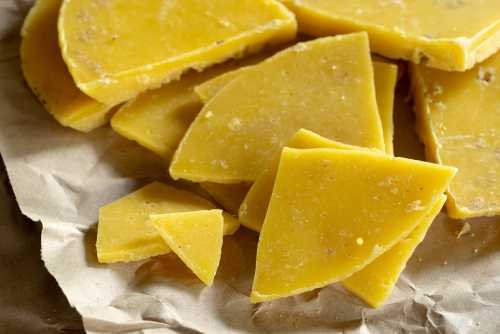What's The Difference Between Paraffin Wax And Beeswax?
Paraffin wax and beeswax are used in a variety of similar scenarios, but how comparable are they?
Comparing Paraffin And Beeswax
Although both waxes are sometimes used in the same way (making candles being the obvious example), they are quite different from each other.
1. Origin
The most obvious difference between beeswax and paraffin wax is their origins and how each of them are made.
Scientists1 have summarized both of these processes in 'Pathways':
Paraffin Wax Pathway
- Dead plants / dead animals
- Microorganisms
- Kerogen
- Hydrocarbon exploration (drilling mud, heavy metals, toxic chemicals)
- Refining*
- Paraffin wax
Source: Simplified from Hossain et al (2010)1
*Toxic catalysts mainly containing heavy metals are used.
2. Sustainability
To quote Hossain et al1:
"The path of sustainable technology is its long-term durability and environmentally wholesome impact ... This „time tested‟ technology will be good for Nature and good for human beings.
The main principle of this technology will be working towards, rather than against natural processes. It would not work against nature or ecological functions. All natural ecological functions are truly sustainable in this long-term sense."
They conclude that whilst beeswax follows a natural and sustainable pathway, paraffin wax does not, due to the addition of artificial processes.
They state:
"Beeswax is a natural product and completely followed the natural pathways. However, the paraffin wax followed the opposite direction of beeswax. Its natural path was disturbed by different artificial processes.
As result, both are similar products, but one is sustainable and other one travelled unsustainable path."
3. Toxic profile and health
Hossain et al1 offer the following points relating to paraffin wax:
- Paraffin wax contains up to 11 carcinogenic compounds.
- Health hazards may be noticed when paraffin wax is "mixed with perfume and "compounded with chemical fixatives, synthetic glosses and bleached cotton wicks".
- Paraffin wax that coats the skin, clogs the pores, interferes with skin's ability to eliminate toxins, thus promoting acne and other disorders.
- Paraffin wax applied in skin preparations may slow down skin function and cell development, resulting in premature aging.
- They note that toxins are released all the time, irrespective of actual burning of the wax, thanks to the continuous process of oxidation in the natural environment.
By comparison, beeswax has an excellent safety profile - see beeswax and health.
It does not release harmful chemicals, and (unless an unusual allergy occurs) is suitable for a wide range of preparations both in contact with food, as well as in skin and medicinal preparations.
It is used safely in beauty products, such as lip balms.
In fact, beeswax is edible, and is sometimes eaten complete with honey, as natural honeycomb.
4. Melting point and level of "purity"
Paraffin has a fairly broad melting point temperature range of 47°C to 65°C, whereas the melting point of beeswax has a much narrower range at 62°C to 65°C, according to Hossain et al.
This wider melting point is an indicator of the presence of impurities, especially at the lower temperature ranges:
"A melting point is a useful indicator of purity as there is a general lowering and broadening of the melting range as impurities increase."2.
Thus, the melting point indicates that beeswax is more pure and free of contaminants than paraffin wax.
A higher melting point may also affect how a product performs in particular scenarios. For example, a paraffin wax candle may not last as long as a beeswax candle of the same size, shape and weight, due to the lower melting point of the former.
References
1. Hossain, M. Enamul & Khan, M & Ketata, Chefi & Islam, Rafiq. (2012). Comparative pathway analysis of paraffin wax and beeswax for industrial applications. Natural and Processed Substances: Production, Uses and Effects. 1.
2. “Melting Point Theory.” 2022. Butte College. April 7, 2022. https://chem.libretexts.org/@go/page/93433.
